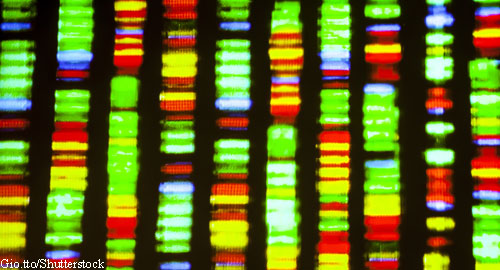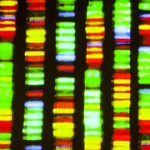 MicroRNA research performed by Laura De Ugarte, PhD, a researcher at the Universitat Autonòma de Barcelona in Spain, and colleagues and published online March 31 in Scientific Reports suggests new approaches to the study and treatment of bone disorders.1 Although the genetic underpinnings of bone metabolism are becoming well understood, microRNAs and the genes that encode them represent a new frontier in medical science. MicroRNA genes are transcribed as large primary transcripts, known as pri-microRNA, that are then processed to form an approximately 70 nucleotide precursor microRNA, known as pre-microRNA. This precursor is subsequently transported to the cytoplasm, where it is processed by a second enzyme to form a mature microRNA of approximately 22 nucleotides. The mature microRNA is then incorporated into a ribonuclear particle to form the RNA-induced silencing complex that mediates gene silencing.
MicroRNA research performed by Laura De Ugarte, PhD, a researcher at the Universitat Autonòma de Barcelona in Spain, and colleagues and published online March 31 in Scientific Reports suggests new approaches to the study and treatment of bone disorders.1 Although the genetic underpinnings of bone metabolism are becoming well understood, microRNAs and the genes that encode them represent a new frontier in medical science. MicroRNA genes are transcribed as large primary transcripts, known as pri-microRNA, that are then processed to form an approximately 70 nucleotide precursor microRNA, known as pre-microRNA. This precursor is subsequently transported to the cytoplasm, where it is processed by a second enzyme to form a mature microRNA of approximately 22 nucleotides. The mature microRNA is then incorporated into a ribonuclear particle to form the RNA-induced silencing complex that mediates gene silencing.
Single nucleotide polymorphisms (SNP) can lie within a candidate miRNA (miR-SNP) or within the pri-miRNA sequence and affect miRNA maturation. The SNPs can affect maturation via modification of the hairpin structure and/or by changing the binding affinity of biogenesis enzymes to the miRNA hairpin. The recent study sought to identify the functional variants within microRNAs that are involved in bone metabolism. Their research revealed two osteoblast-expressed microRNAs (miR-3679 and miR-4274) that are associated with femoral neck bone mineral density (BMD) and are overexpressed in osteoporetic fractured bone.
In particular, the investigators found two miR-SNPs (rs6430498 and rs12512664) located within the pre-miRNA sequence of miR-3679 and miR-4234, respectively, that were associated with the femoral neck BMD. Because these microRNAs harbored BMD-associated SNPs in the pre-miRNA sequence, the investigators analyzed bone samples to quantify any difference in expression levels of the specific microRNAs. They found that both microRNAs were overexpressed in fractured bone.
Thus, the findings suggest that the identified variants can play a role in bone metabolism. To pursue this hypothesis, the investigators cultured primary human osteoblasts for DNA and RNA extraction and sorted them by genotype for both rs6430498 and rs12512664. They found a significant correlation between miRNA levels and the genetic variant.
The researchers then investigated the ability of the mature microRNA miR-3679-3p and miR-4274 mimics or inhibitors to affect osteoblast function. They found that inhibition of miR-3679-3p significantly enhanced 10% matrix mineralization levels in human osteoblast cell lines in a 28-day culture. However, they saw no effect when miR-4274 was transfected into the cells.
“Consistently with miR-3679-3p overexpression in OP fractured bone, transfection results suggest that miR-3679-3p negatively regulates matrix mineralization by osteoblasts, which could lead to an [osteoporotic] phenotype,” write the authors in their discussion.
The investigators then performed a bioinformatics analysis, which revealed a subtle effect of the BMD-associated SNPs on secondary pre-miRNA structure. The predicted targets for miR-3679 include WHSC1/WHSC1L1, THRAP2, SMAD2, LRP6, SOX4, WNT7A and MGAT5B genes. Predicted targets for miR-4274 include BTF3, LRRC1, SOCS5, RAB10, FGR, RABGEF2 and ESRRG genes. The gene targets of miR-3679, in particular, are associated with cell cycle, differentiation and tissue development, making them intriguing candidates for understanding osteopathology. Thus, from their data, the investigators hypothesize that not only could the overexpression of microRNAs contribute to the osteoporotic phenotype, but also that these gene targets may be critical to the process of osteoporosis.
Lara C. Pullen, PhD, is a medical writer based in the Chicago area.
Reference
- De-Ugarte L, Caro-Molina E, Rodríguez-Sanz M, et al. SNPs in bone-related miRNAs are associated with the osteoporotic phenotype. Sci Rep. 2017 Mar 31;7(1):516. doi:10.1038/s41598-017-00641-7.

